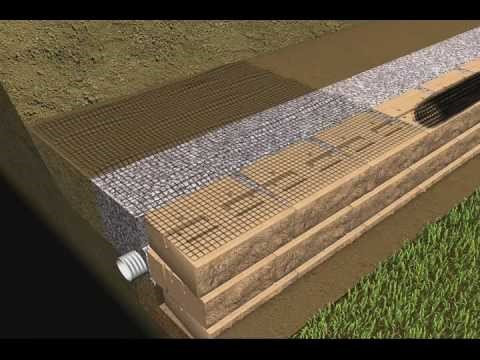Soil reinforcement is a technique that uses geo-engineering techniques to increase the stiffness and strength of soil. In areas where erosion is likely, soil strengthening is required. As soft soil cannot adequately support any construction or building, it is especially helpful in places with soft soil. This type of soil is also very susceptible to different environmental and natural causes, such as high compressibility, inadequate shear strength, temperature variations, etc.

HOW IS SOIL REINFORCEMENT DONE?
Tensile components are inserted into the soil as part of soil reinforcement to increase the stability and strength of the soil naturally. In order to accomplish this, surfaces in the aggregate and sub-base of the soil mass are brought into contact with reinforcement components. Tensile loads, which can resist soil movement and give additional support for enhanced strength, are created when pressure on the soil mass results in a strain on the reinforcements. In this manner, a soil-reinforcement system that offers more shear strength than the soil mass alone is produced.
CHALLENGES IN SOIL REINFORCEMENT
- The largest issue for embankments on weaker foundations, such as airports next to sand dunes, is stabilising and strengthening the surrounding soil.
- Geotextile layers are deliberately positioned on the ground to create steep soil slopes. The goal is to make the soil more tensile so that it slides or rotates less.
- For Retaining Walls,Various wall applications, such as on-site infill, are combined with geotextiles to strengthen soil-supporting walls. For retaining walls, geotextile offers an alternative to conventional cast-in-place concrete construction.
- Basement Stabilization,Soil that is soft and organic has a low tensile strength. Traditional methods’ initial cost Land filling might cost up to 50% more than using soil reinforcing techniques geotextiles. To evenly disperse the weight throughout the soil, geotextiles can be employed and reduce the movement of tiny soil particles thus geotextiles are a low-cost option cost-effective substitute for conventional sub-grade displacement, excavation, and ways for replacing and chemically stabilising soil.
- For Strengthening the Base Course, By making the granular base course material more tensile, soft soil’s ability to support loads can be strengthened. The load-bearing capacity of the soil at the granular base structure is increased by geotextile, improving the tensile strength of the soil. The granular base course is frequently reinforced using a grid system.
- Geotextiles are a practical way to reinforce fragile soils in places like lagoons, sludge ponds, and other similar environments. By offering strong tensile support and anti-deformation capabilities to support building structures and enhance the quality of the soil body, geotextiles can fortify soft soil.
